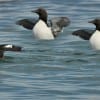 Our first PDF on Alaskan birds is from the southern site of Homer, on a small island many tourists visit.
Our first PDF on Alaskan birds is from the southern site of Homer, on a small island many tourists visit.
Hope you enjoy it!
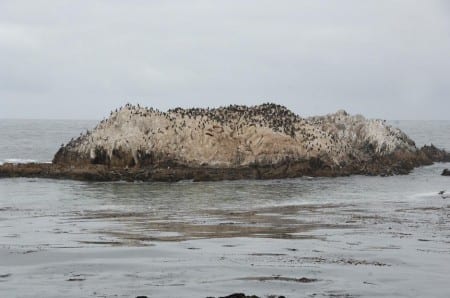
Sea birds love to nest on rocky islands with cliffs. There are very few enemies and food is never too far. This is one of many “Bird Islands” in the World, with his location off Homer Spit in southern Alaska. The two dominant species on this Island are Black-legged Kittiwakes and Common Murres but here are other interesting kinds.
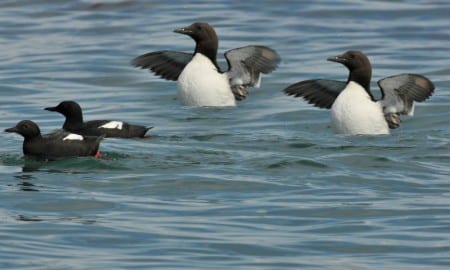
Pigeon Guillemots (left) and Common Murres are in the Alcida e family, a group of northern birds that resemble penguins with the ability to fly. We usually see 14-15 alcid species on our Alaska trip and these two may be the most common. The most famous alcids are puffins and there are two species in Alaska.
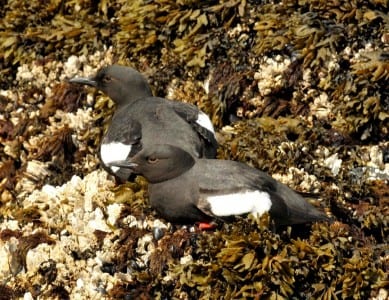
Birds like the guillemots find a level spot on the cliff and lay an egg on a surface maybe 3-4 inches wide. Since the egg is so much smaller on one end than the other, it never rolls very far, but rather in a tight circle. Guillemots are smaller than murres and puffins but larger than auklets and murrelets. The largest alcid was the Great Auk which went extinct over a century ago.
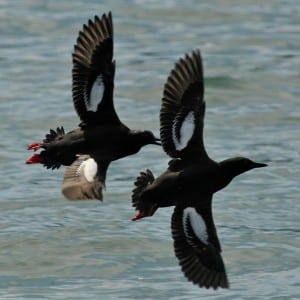
Despite the bad light, you can see that guillemots are adept fliers, as are all alcids. They also “fly” through the water while swimming, much like the totally-unrelated penguins of the Southern Hemisphere. Like many water birds, guillemots have flash colors in their wings to take the attention of predators off their torso when they are attacked.
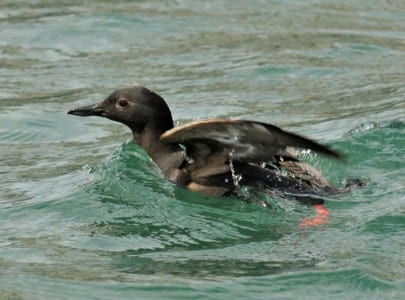
This is a Pigeon Guillemot so full of fish it struggles to get airborne. Like diving ducks, alcids also ride low in the water to reduce buoyancy, so they can dive to forage easier. This is also true of loons, cormorants and grebes. This is a real problem when you have young halfway up the cliff to feed.
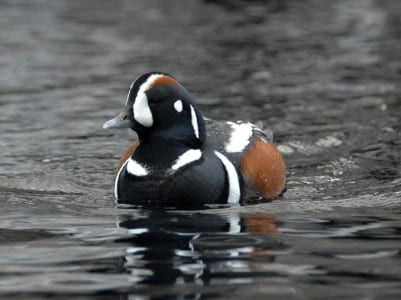
Harlequin Ducks are common in southern Alaska and are frequently seen along rocky coastlines. They have terrific ruptive marks to break up their form so predators don’t notice them. They are typical ducks in that males are too colorful to be around the young, which are able to feed themselves without their parent’s help anyway. This is why most male ducks take off not long after fertilization.
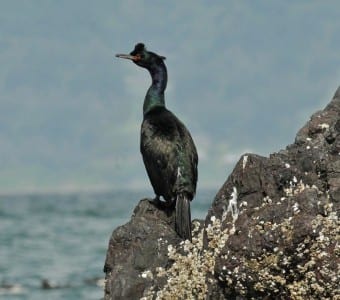
Nesting in small numbers on Bird Island are Pelagic Cormorants, a North Pacific bird named for their love for offshore waters. They are quite iridescent and the crest and red face really set them off. (There is also a Red-faced Cormorant). Cormorants have hooked bills for catching fusiform fish the shape of mullet, and some species have done tremendous economic damage in fish farms, etc
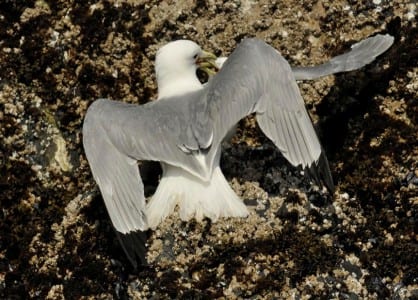
Kittiwakes are the dominant gull (by sheer numbers) at Bird Island, easily identified by the black wing-tips (like they were dipped in ink). These two males are locked in combat over territory, as space is at a premium in small, rocky islands. Kittiwakes are gulls, of course, but are slender and actually plunge-dive for food (unlike most gulls).

The Northwestern Crow was split off from the American Crow decades ago and exists from the Oregon Coast to Southern Alaska. It is slightly smaller than the American, with a lower call and shorter legs and beak. The last characteristics are examples of Allen’s Rule, which states that warm-blooded animals in colder regions often have reduced extremities to reduce heat loss.
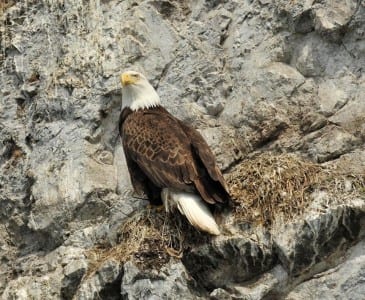
Our National Bird hangs out at rookeries and takes what they want from nests. Adult birds are terrified of eagles and offer little resistance. It would be wise not for birds to underestimate the speed and agility of eagles in flight, and parent birds just seem to cut their losses and move on. This area may have the highest number of Bald Eagles in North America. You can access Bird Island by contacting the Water Taxi people on Homer Spit, although I am saddened by their inflationary rates.

 Posted in
Posted in 























